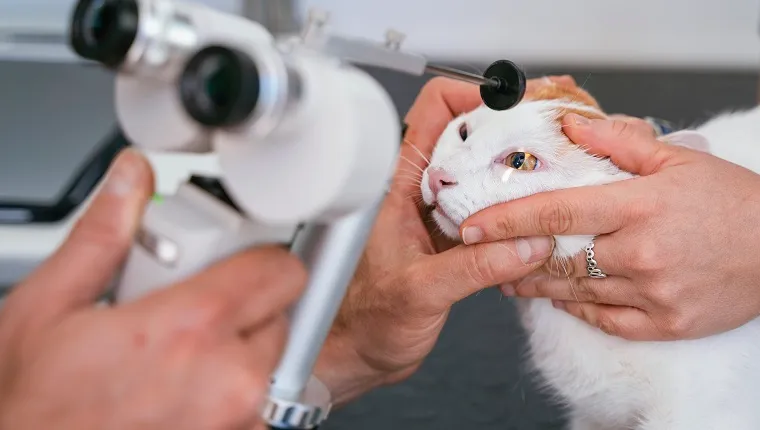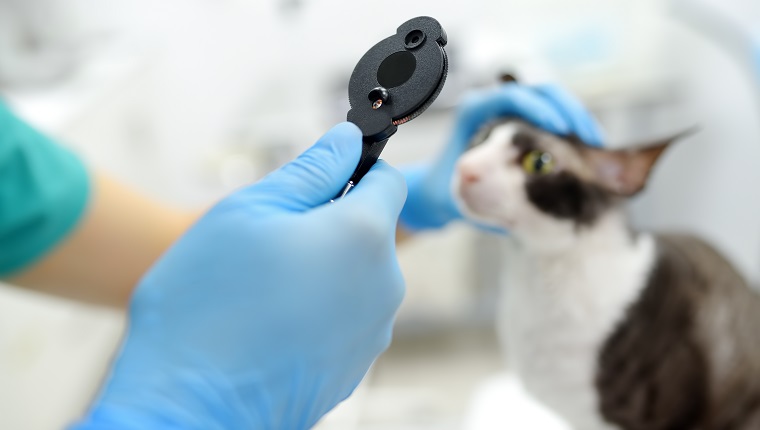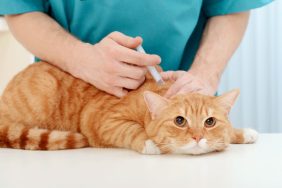Feline eosinophilic keratitis in cats, also called FEK or proliferative keratitis, is a medical condition that occurs when a cat’s cornea becomes inflamed due immune-mediated issues.
The condition often appears in cats who contract the feline herpesvirus-1 (FHV-1) — and cats under the age of four also seem most likely to develop it. Note that this is a different condition to dry eye in cats.
If you see signs that your kitty might be suffering from eye issues, then you must consult your veterinarian for a proper diagnosis and advice. Here’s what you should know about the symptoms, causes, and treatments of feline eosinophilic keratitis in cats.
Symptoms Of Feline Eosinophilic Keratitis In Cats
Feline eosinophilic keratitis in cats can affect either one eye individually or both of the eyes. Some of the most telltale signs of the condition include:
- Watery discharge from the eye (which may include mucus)
- Inflammation of the eye
- Third eyelid thickening
- Squinting
- Pink, grey, or tan lesions visible on the cornea
Causes Of Feline Eosinophilic Keratitis In Cats

The cause of feline eosinophilic keratitis in cats is not fully known. In up to 75 percent of cases, affected cats also test positive for feline herpesvirus-1.
Additionally, male neutered cats and all cats under the age of four also seem most at risk.
Veterinary Treatments
If you think that your cat might be suffering from FEK, then your veterinarian will want to carry out a full physical examination and pay close attention to your cat’s eyes.
In general, the key to diagnosing the condition is to successfully rule out other conditions such as corneal ulcers.
When it comes to treatment, topical medications are usually prescribed to a kitty on an outpatient basis.
As always, if your vet prescribes your cat any medicine, it is vital that you stick to the exact frequency and dosage instructions and complete the full course of medication. If you are unsure about applying topical medication to your cat’s eye area, ask your vet to walk you through the process.
Has your cat developed feline eosinophilic keratitis? What kind of treatment has your vet recommended? Tell us all about it in the comments below.









